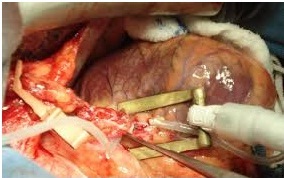Arteries function is to supply oxygen-rich blood to your heart muscle. CHD (Coronary Artery Disease) is the disease in which a waxy substance called plaque (plak) accumulates inside the coronary arteries. The accumulation of hardened plaque leads to narrowing the arteries and reduces the flow of oxygen rich blood to the heart. This condition can cause the severe chest pain or discomfort called as angina.
If the plaque ruptures, a blood clot can form on its surface. A large blood clot can mostly or completely block blood flow through a coronary artery. This is the most common cause of a heart attack. If the blood supply to the heart muscle continues to decrease due to increasing obstruction of a coronary artery, a heart attack may occur.
To overcome all these, most of the surgeons are going to Coronary artery bypass grafting (CABG), which is the most common and very popular type of heart surgery. CABG improves blood flow to the heart. CABG used to treat people who have severe coronary heart disease (CHD). In CABG, a piece of healthy blood vessel (artery or vein) from the vein of legs or an artery in the chest. An artery of the wrist may also be used. One end of the graft is attached above the blockage area and the other end is attached below the blockage area. Blood is routed around, or bypasses. Then blood flow takes new route to reach the heart muscle with oxygen and nutrients. This is called the coronary artery bypass surgery. This a new path to oxygen-rich blood to flow to the heart muscle. Surgeons can bypass multiple blocked coronary arteries at one surgery.
United States Centers for Disease Control states that the average cost of hospitalization (only) associated with a coronary bypass operation in the United States in 2013 was $38,707.

